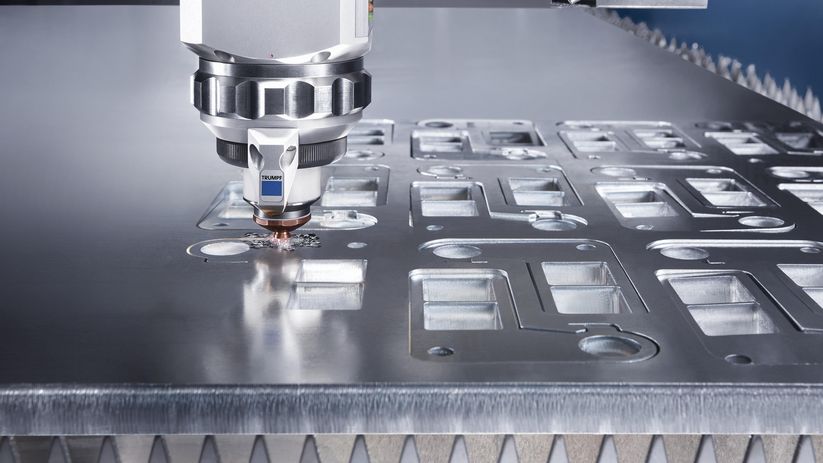Laser cutting machines revolutionized the manufacturing industry when they were developed in the 1960s and adopted by the aerospace industry in the 1970s. Today, they are used in many more industries that use precise parts with low tolerances, when traditional casting or die cutting parts won’t do. Some people might question how lasers can cut through sheets of metal with ease. It is just light after all, right? That’s why we’ve created this guide explaining the science behind laser cutting.
The Science of Lasers
The theory behind lasers was first developed by Albert Einstein in his 1917 paper, On the Quantum Theory of Radiation. The theory was expanded upon in the 1950s by Gordon Gould and the first working lasers were created shortly after in the 1960s. Lasers are created by stimulating a light inside a gain medium. The photons of light then bounce between two mirrors, amplifying the light. One of the mirrors is partially transparent, only letting the most intense light out, which becomes the laser beam.
How a Laser Cutter Cuts Metal Parts
Many people might think it’s impossible for a laser to cut metal, but we don’t use low-powered laser pointers you can find at Walmart. We use high-powered solid-state lasers that travel through a fiber optic cable to a nozzle outfitted with special lenses that further intensify the laser. This intensified laser super heats the metal, vaporizing it almost immediately. The nozzle is guided along the surface of the sheet metal by a Computer Numerical Controller (CNC) in a fully automated process, making turnaround very fast. Although we’re technically not cutting the metal, we are vaporizing the edge of the part, separating it from the rest of the sheet.
Why Laser Cutting is Superior to Traditional Parts Manufacturing
The CNC machining process of laser cutting is extremely fast and accurate, making laser cutting the best option for parts manufacturing. The tolerances of our cutting edge machines are within 0.01” – half that of the ISO standard for cut parts. Laser cutting also doesn’t require as much down time as other methods, like forming and sharpening dies for die cutting or creating molds for cast parts. We simply upload your designs to the automated system, load the raw materials, and begin cutting.
Get Started with Laser Cutting Today
Are you in need of laser cut parts for your manufacturing process? Contact the experts at Edge Metalworks today. We’re constantly expanding our fleet of laser cutting machines to fit your needs. We’ve recently expanded our services to include tube cutting. Request a quote today to get started and we’ll reach out to you shortly.
